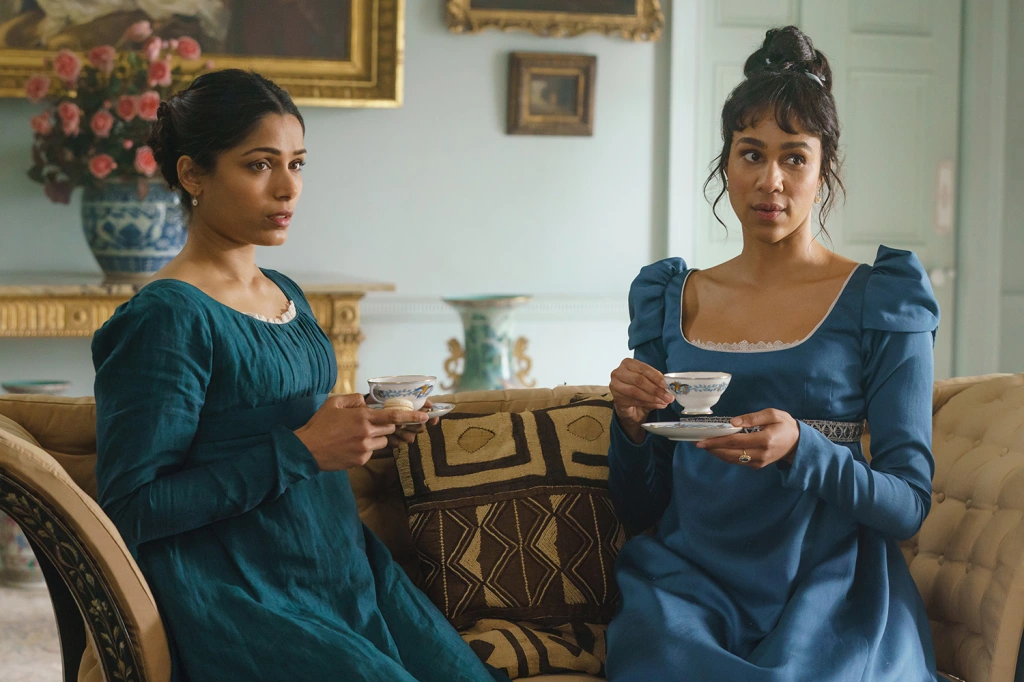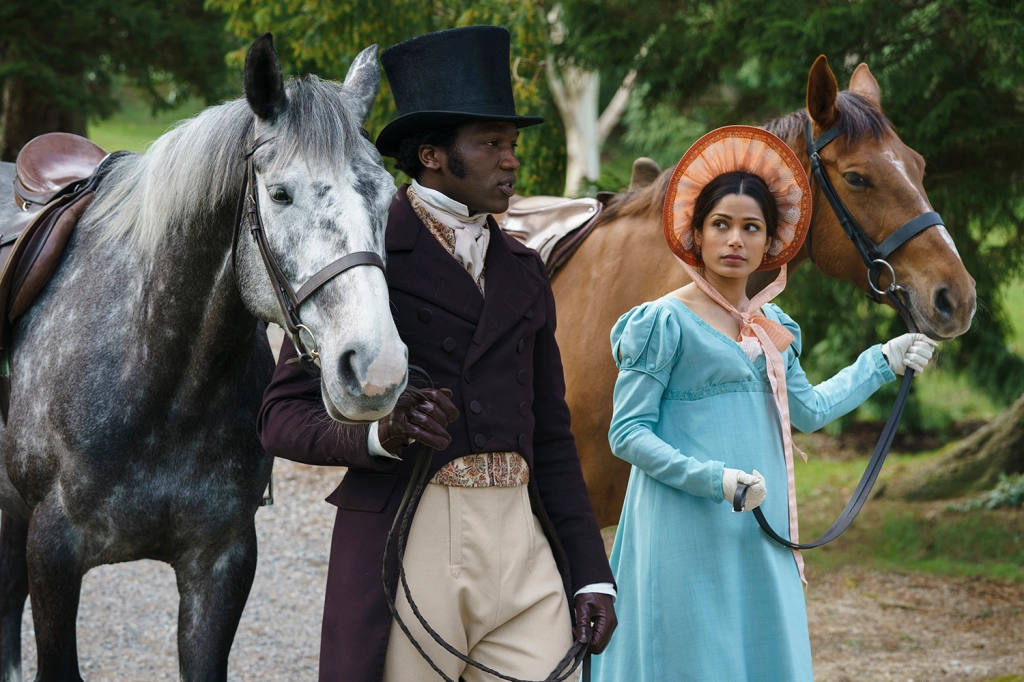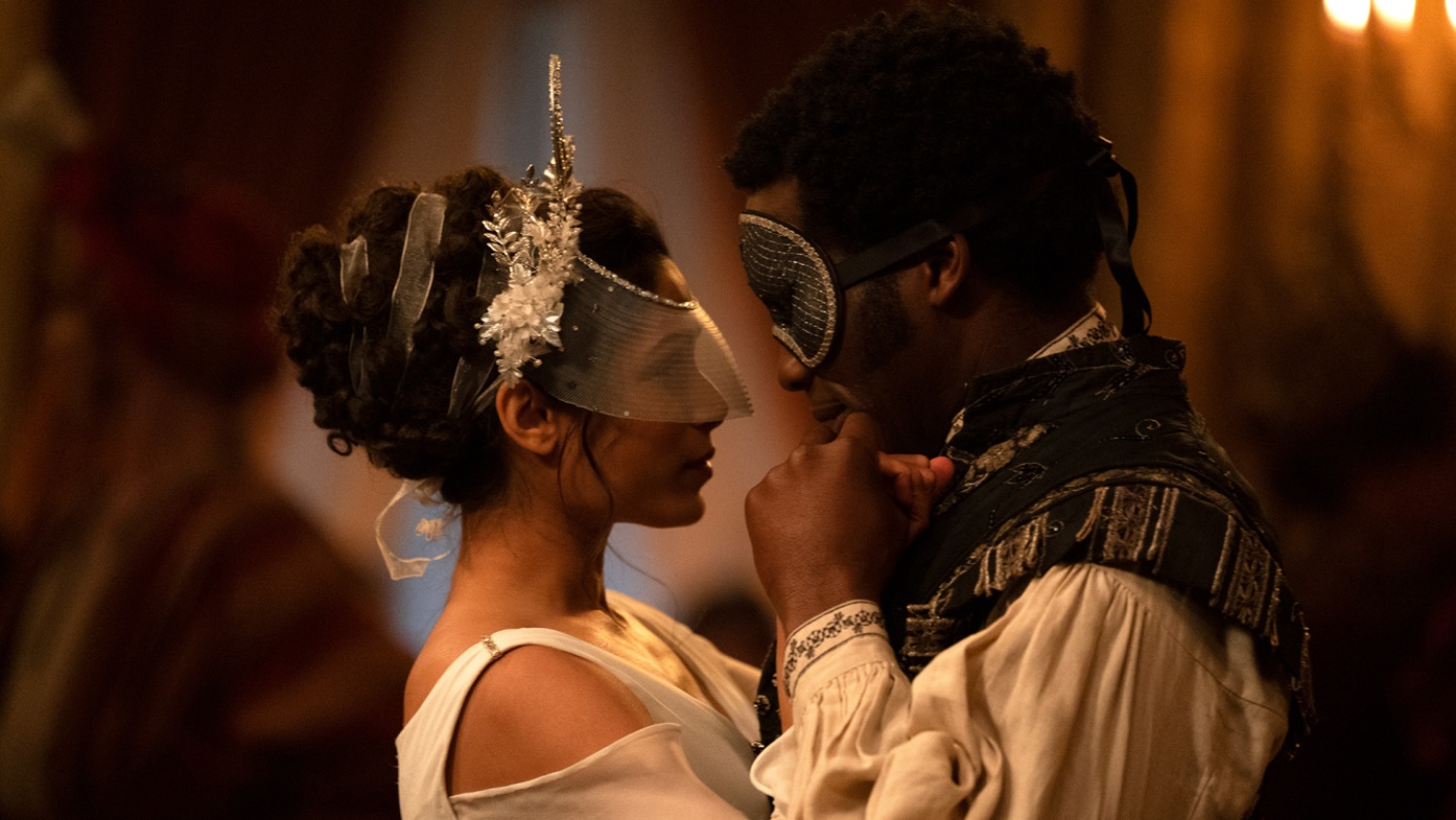In 1818 London, eligible bachelor and talk-of-the-town Mr. Jeremy Malcolm (Ṣọpẹ Dìrísù) is searching for a bride. Unlike the other men, he has a list of requirements. His high demands for a wife lead him to jilt Miss Julia Thistlewaite (Zawe Ashton), which he will come to regret. In a revenge plot to give Mr. Malcolm a taste of his own medicine, Julia recruits her friend Selina Dalton (Freida Pinto) to masquerade as Mr. Malcolm’s perfect bride, only to turn him down with her own list of requirements. Predictably, things go awry because love is, well, unpredictable.
Mr. Malcolm’s List is a pleasant promenade through a fantasy Regency-era England filled with people of color. Mr. Malcolm’s List checks off all requirements for a typical romantic British period piece: gorgeous dresses, lavish parties, heartfelt love confessions, and treacly romance. It also has the added element of completely colorblind casting comparable to Rodgers and Hammerstein’s Cinderella (1997). For fans of Bridgerton, this is pretty much the PG version of the show (though, Mr. Malcolm’s List doesn’t try to work in historical references to how their world used to be divided by color).
Mr. Malcolm’s List is pure escapist fun, with POC at every level of society without hardship rising through the ranks or any complicated explanations about the racial hierarchies of this alternate universe. The characters of color do not suffer, but all get their fair share of bubbly romance. Characters of color just get to exist, and it’s a joyous experience to watch them star in a genre that has always excluded people like us.

Although this genre isn’t typically my cup of tea, the charming cast and romantic antics had me giddy by the end. Zawe Ashton is a scene-stealer who manages to make her scheming, sometimes mean character still hilarious and likable. Oliver Jackson-Cohen as Lord Cassidy is a welcome addition to any scene as Julia’s sweet, overly reliable cousin. Theo James’s Captain John Ossory is another scene-stealer who occasionally overtakes Mr. Malcolm as this film’s romantic star with his challenging and passionate nature.
Freida Pinto and Ṣọpẹ Dìrísù star as the romantic leads in this film. Getting to watch a brown woman and a Black man fall in love felt like a privilege. It’s terribly sad that that’s how I felt, but it’s because of how rare representation is for these kinds of relationships. When it comes to American and British media, the typical interracial romantic pairing is between a white person and a person of color. It is not often that you see two people of color as romantic leads in film. It’s even rarer to see an interracial relationship in which both leads are people of color. Especially not in a genre historically reserved for white Brits.
What’s more, I can’t recall watching something with a Black romantic protagonist since Bridgerton. It’s even rarer to see a dark-skinned Black man as a lead. Ṣọpẹ Dìrísù does a wonderful job portraying Mr. Malcolm’s awkward charm, quiet but deep intelligence, and seemingly aloof yet genuinely sweet nature. While his character’s racial and cultural identity is largely ignored in the screenplay, in one scene he does recite a phrase in his native Yoruban. This cultural nod is seamlessly integrated into his character in a way that feels organic and never overshadows any other elements of his character.

In an interview with The Hollywood Reporter, Freida Pinto spoke about how important it was to weave in subtle cultural references for the main characters. Dìrísù integrated the Yoruban language, and Pinto asked the costume designer to incorporate a paisley print (a design originally from India) into her dress. Director Emma Holly Jones also told The Hollywood Reporter about how the production team turned to “historians, 19th-century Indian and African artwork and furniture from different parts of the world to create color palettes, costumes and locations like Hadley Hall.”
Jones also struggled to find financiers for the film, as many wanted white stars for the movie’s leads, and if not white ones, then at least more famous ones. Luckily, the movie’s producers and casting director stuck with her on her casting choices. It’s clear an admirable amount of effort went into creating an accurate and inclusive environment both on and offscreen for this movie. This is thanks to the group of diverse voices behind the camera (Pinto herself was an executive producer) and the unwavering dedication to inclusivity on Jones’s part. The American and European film industries need more attitudes like this among directors, writers, and producers. People of color deserve to see ourselves in light, romantic films like this, too.
Mr. Malcolm’s List is now on demand.

Comments